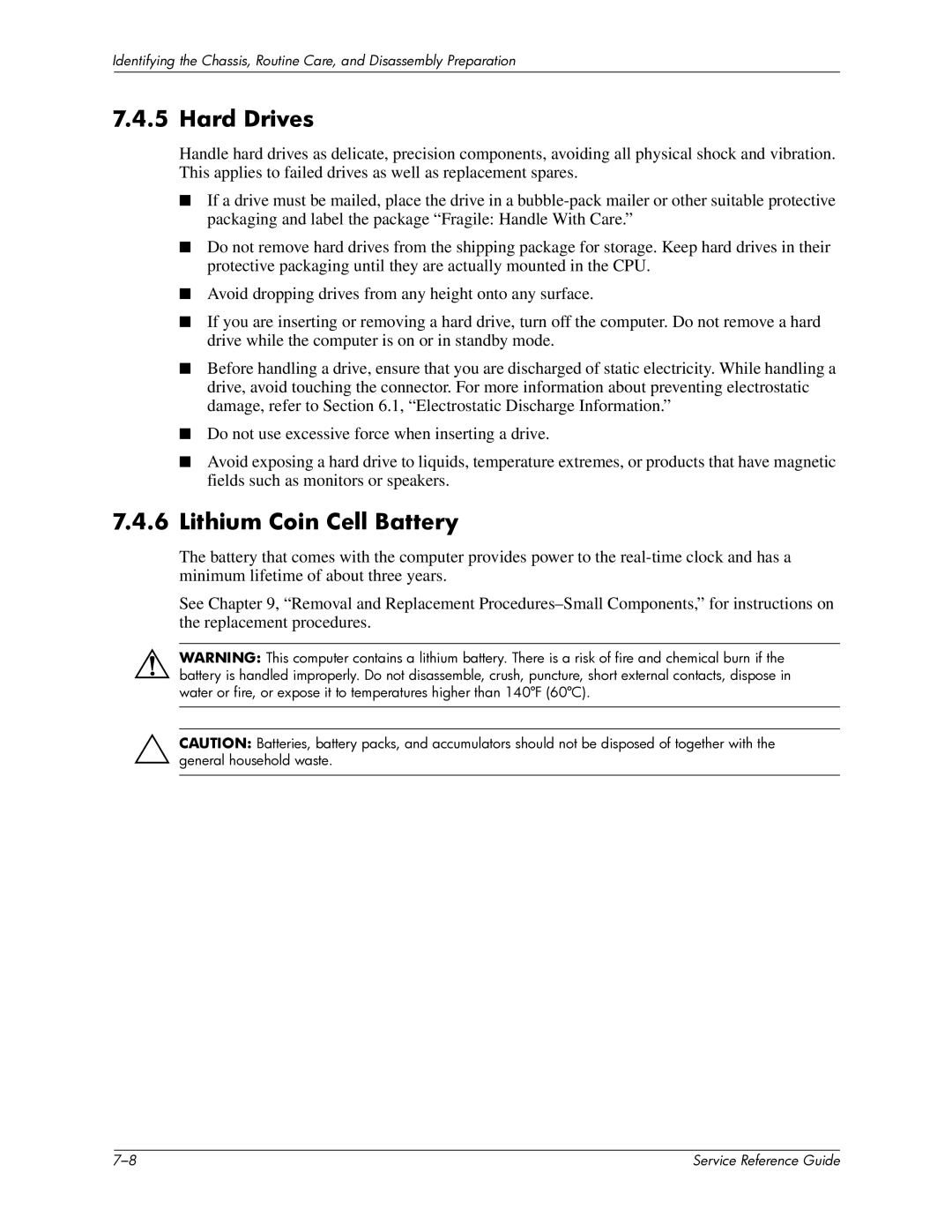
Identifying the Chassis, Routine Care, and Disassembly Preparation
7.4.5 Hard Drives
Handle hard drives as delicate, precision components, avoiding all physical shock and vibration. This applies to failed drives as well as replacement spares.
■If a drive must be mailed, place the drive in a
■Do not remove hard drives from the shipping package for storage. Keep hard drives in their protective packaging until they are actually mounted in the CPU.
■Avoid dropping drives from any height onto any surface.
■If you are inserting or removing a hard drive, turn off the computer. Do not remove a hard drive while the computer is on or in standby mode.
■Before handling a drive, ensure that you are discharged of static electricity. While handling a drive, avoid touching the connector. For more information about preventing electrostatic damage, refer to Section 6.1, “Electrostatic Discharge Information.”
■Do not use excessive force when inserting a drive.
■Avoid exposing a hard drive to liquids, temperature extremes, or products that have magnetic fields such as monitors or speakers.
7.4.6Lithium Coin Cell Battery
The battery that comes with the computer provides power to the
See Chapter 9, “Removal and Replacement
ÅWARNING: This computer contains a lithium battery. There is a risk of fire and chemical burn if the battery is handled improperly. Do not disassemble, crush, puncture, short external contacts, dispose in water or fire, or expose it to temperatures higher than 140ºF (60ºC).
ÄCAUTION: Batteries, battery packs, and accumulators should not be disposed of together with the general household waste.
| Service Reference Guide |
